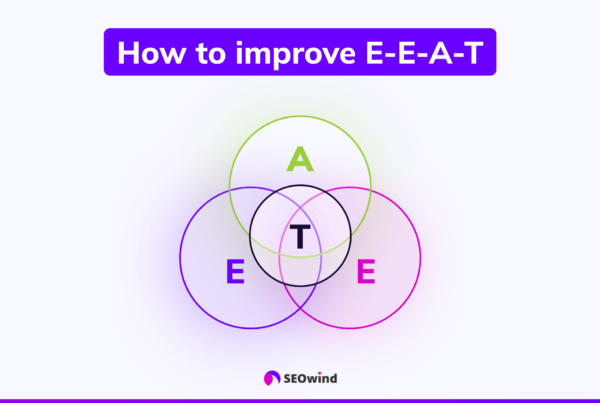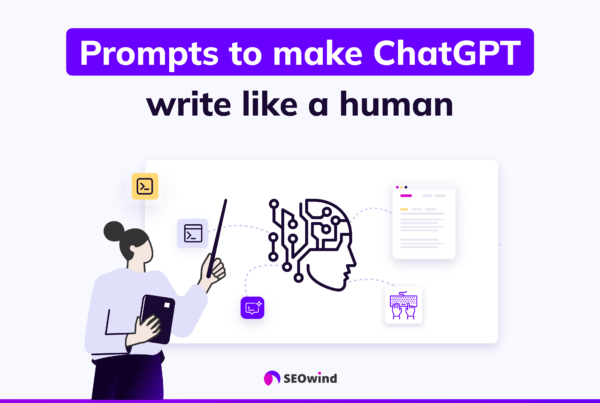Are you struggling to drive traffic, increase conversions and maintain customer loyalty in your e-commerce business? It’s time to step up your game with the power of content marketing. We’re introducing “The Ultimate Guide to Content Marketing for eCommerce”: a comprehensive guide that will help you leverage effective content strategies to optimize your online presence, engage customers, and ultimately boost sales. In the following sections, we’ll take a deep dive into proven tactics, insightful examples, and practical tips that can empower you to ace content marketing for your e-commerce website.
What is Content Marketing for E-commerce?
Content marketing for e-commerce refers to the process of creating, distributing, and promoting valuable, relevant, and consistent content designed specifically to attract, engage and retain an audience of potential customers—all with the ultimate goal of driving profitable action. Unlike traditional advertising or promotional tactics like paid search campaigns or banner ads, content marketing focuses on delivering value through useful information that helps shoppers make informed decisions.
In the context of e-commerce businesses this might include:
- Curated blog posts addressing common questions
- Informative buying guides
- Engaging video tutorials showcasing product usage
- Interactive tools like quizzes or calculators
- User-generated content such as customer reviews
- High-quality infographics summarizing key data insights
These various forms of engaging multimedia aim at nurturing visitors throughout their journey in different stages; from awareness to consideration until post-purchase stages by establishing credibility and trust.
By implementing a strategic approach towards e commerce content marketing alongside careful planning, creation, and promotion techniques—your eCommerce site can gain organic reach while fostering lasting rapport with consumers who look forward to investing within products aligned offerings ultimately improving overall customer experience and further factoring long-term growth trajectory success factors
Benefits of Content Marketing Strategy for Ecommerce

Investing time and resources in ecommerce websites offers invaluable advantages that can propel your brand to new heights. The benefits in this section provide ample reasons to integrate a comprehensive content strategy within your ecommerce operations.
1. Improved SEO Performance
A well-executed ecommerce content marketing initiative significantly boosts your website’s search engine optimization (SEO) performance. This results in better visibility on search engine results pages (SERPs), driving more organic traffic to your online store.
When you create high-quality, relevant content addressing the needs and interests of your target audience, search engines like Google reward you with higher rankings. Furthermore, incorporating long-tail keywords related to your products or services will attract wider demographics searching for those specific terms.
2. Completes the Customer Journey
Content marketing plays a crucial role in guiding potential customers through their purchasing journey, from initial discovery to final sale or conversion.
By offering informative, engaging materials at every stage of this process, you make it easier for shoppers to make informed decisions about buying from your brand. Examples of such content include blog posts about product comparisons, tutorial videos showing how items work, and user-generated reviews that provide social proof.
Thus, a well-planned ecommerce content strategy caters not only to new visitors but also nurtures existing customers by addressing different stages of their buyer’s journey.
3. Differentiates Your Brand
Crafting a unique brand voice through blogs, videos, infographics or podcasts sets you apart from competitors while creating memorable experiences for current and prospective fi customers alike. This personalized approach encourages increased engagement which ultimately fosters stronger connections between consumers and businesses.
4. Optimizes Your Conversion Funnel
Implementing a solid content marketing strategy optimizes your conversion funnel, turning casual visitors into leads and eventually loyal customers. By consistently producing content that resonates with your target audience’s pain points and expectations, you successfully guide them along the sales journey.
This experience might begin by addressing their problem through a helpful blog post, followed by product recommendations supported by persuasive tutorial videos or customer reviews. Such strategic use of content marketing techniques can significantly boost conversions and revenues for your online store.
5. Amplifies Brand Loyalty
High-quality content not only attracts new clients but also plays a pivotal role in amplifying brand loyalty among existing ones. Engaging materials that inform, entertain, and provide value nurture an ongoing relationship between your e-commerce company and its patrons.
Moreover, user-generated content like product reviews or testimonials fosters trust and credibility while creating opportunities for potential customers to connect authentically with their peers who endorse your brand based on their experiences. Consequently, sustained commitment to content marketing fosters positive brand sentiment and evangelism amongst consumers—both crucial elements in reinforcing long-term loyalty.
Content Marketing Strategies and Examples for Ecommerce Stores

1. Create a Content Hub
A content hub is a centralized collection of multimedia content tailored to your target audience’s interests. Creating a content hub helps organize your ecommerce site’s information, making it easy for customers to discover relevant content easily. An effective content marketing e-commerce strategy involves selecting popular topics that resonate with your target audience, curating existing rare content pieces, or developing fresh and engaging items related to your brand.
Examples of successful content hubs may include:
- Themed articles (e.g., seasonal fashion trends)
- Video tutorials
- Product pages and highlights
- Guides and whitepapers
By placing these valuable resources together on a single platform, you optimize findability while keeping visitors engaged with various forms of available media.
2. Build SEO Topic Clusters on Your Blog
The foundation of any good ecommerce content strategy lies in optimizing your website for search engine visibility. Building SEO topic clusters within your blog can improve your rankings by grouping relevant material under specific themes or keywords—ultimately directing traffic from multiple sources toward one core piece of pillar content. This technique not only strengthens the authority of primary web pages but also allows consumers easier navigation amongst informative resources.
Some essential steps in this process are:
- Selecting high-value keywords connected to your niche
- Developing cornerstone articles around those qualifiers
- Linking from supplementary posts back to the main feature as anchor text.
3. User Generated Content (UGC)
User-generated content (UGC) is anything created by customers relating directly or indirectly to your ecommerce company — it includes testimonials, reviews, social media interactions, or images featuring purchased products throughout daily life activities.
Ecommerce content marketing examples leveraging UGC involve integrating client creations within promotional materials such as email newsletters or sponsored campaigns—depending on the author’s permission— which often sparks identification between prospective buyers and an authentic brand image.
Key benefits are:
- Increased social proof
- Strong relationships with customers to form brand loyalty
- Free content creation
4. Build a Glossary of Terms
A glossary of terms is an index that clarifies and educates users by providing definitions or explanations for industry-specific terminology. By constructing a thorough inventory, you also generate targeted ecommerce content focusing on specific keywords—ultimately increasing organic traffic.
For example, a tech-related e commerce store could provide detailed explanations of the latest gadget abbreviations or standards, whereas fashion blogs may outline sustainable manufacturing practices.
5. Infographics/Gift Guides
Infographics and gift guides serve as visually appealing data visualizations mixing compelling graphics with informative text about your products. These resources possess higher shareability quotients across multiple platforms, potentially leading to wider brand exposure.
Some helpful suggestions include:
- Comparing product attributes
- Explaining processes and concepts
- Presenting survey results
6. Tutorial Videos
Tutorial videos demonstrating how to use, assemble, or install purchased items offer valuable supplementary insight regarding specific products in action—which facilitates decision-making patterns amongst undecided clientele contemplating similar purchases.
7. Reviews/Comparison Pages
Reviews and comparison pages benefit due diligence before online shopping experiences by sharing consumer feedback detailing their pre-purchase motivations alongside post-acquisition assessments—improving overall satisfaction rates.
8. FAQ Pages
Attentive FAQ pages addressing common queries, concerns or troubleshooting requests proactively support busy shoppers searching for prompt resolutions without losing interest amidst overwhelming options elsewhere.
9. Customer stories
Present customer stories to make your ecommerce website more reliable. Showing your customers brings your brand closer to your potential users.
Getting Started With Ecommerce Content Marketing
Embarking on content marketing for ecommerce requires a thoughtful approach and meticulous execution. To achieve success in driving traffic, generating leads, and converting potential customers into loyal buyers, focus on these three essential steps: developing a content marketing plan, creating valuable content, and promoting your content effectively.
1. Developing a Content Marketing Plan


A solid content marketing plan is the foundation of successful ecommerce content marketing efforts. It helps keep your team on track and ensures that everyone works consistently toward shared goals. When crafting your plan, consider incorporating the following elements:
- Define Your Goals: Start by defining measurable objectives linked to key performance indicators (KPIs) such as website traffic, lead generation, or sales.
- Identify Your Target Audience: Create buyer personas representing your ideal customers to understand their preferences, pain points, and buying journey.
- Conduct Keyword Research: Utilize keyword research tools to find relevant keywords for your industry that demonstrate search volume and competition level. This information will help you form future SEO topic clusters on your blog.
- Establish a Content Mix: Determine the types of content you’ll produce—such as blog posts, whitepapers, videos, infographics—that resonate with your target audience and support their needs throughout the customer journey.
- Develop an Editorial Calendar: Outline upcoming topics in alignment with timely themes or events specific to your niche. An editorial calendar promotes consistency in posting frequency while supporting organized planning.
2. Creating Engaging Content


Once you have a well-defined content marketing plan in place, it’s time to shift focus towards crafting compelling pieces. Here are some tips for producing engaging ecommerce content:
- Stay Customer-Centric: Always prioritize the interests and desires of your target audience when generating ideas for material. Address common questions or concerns they may encounter during their path to purchasing from you.
- Emphasize Visual Appeal: As an ecommerce business, your primary goal is to showcase the products you’re selling effectively. Invest in high-quality images or videos that capture attention and demonstrate proper context.
- Maintain Tone Consistency: Ensure all content adheres to a consistent brand voice, whether it’s formal or conversational. Your messaging should express similar themes throughout your entire site.
- Employ Storytelling Techniques: Keep readers intrigued by incorporating storytelling components that generate emotions and provide value through entertainment or education.
3. Promoting Your Content


Amazing content alone won’t fulfill its intended purpose if not promoted diligently. Strategize ways to reach potential audiences using these vital tactics:
- Social Media Marketing: Utilize paid posts on platforms like Facebook and Instagram to target specific demographics based on their location, interests, behavior, and more.
- Email Marketing Campaigns: Share new blog posts or pertinent ecommerce content with your subscribers periodically, potentially generating sales leads.
- Influencer Collaborations: Partner with industry influencers who resonate with your audience for increased awareness and promotion of your material.
- Leverage User-Generated Content (UGC): Feature testimonials, reviews, and photographs from real customers as part of your marketing strategy—increasing trustworthiness and credibility among prospective buyers.
By following this three-step framework to devise a coherent plan, produce captivating ecommerce content marketing materials, and promote them efficiently across optimal channels—you are well on your way toward achieving tangible outcomes!
How to Leverage AI for Content Marketing for Ecommerce
Artificial Intelligence (AI) has revolutionized various industries, and content marketing for ecommerce is no exception. By leveraging AI, online retailers can gain valuable insights, optimize content strategies, and create a more personalized experience for their customers. Let’s explore the different ways you can utilize AI in your ecommerce content marketing efforts.
1. Personalize and Recommend Relevant Content
One of the most significant benefits AI offers is its ability to process massive amounts of data to better understand user behavior. With this knowledge, AI-driven algorithms can anticipate customers’ preferences and deliver tailored content that resonates with individual users. For instance:
- Use website personalization tools powered by AI to display relevant product recommendations based on customer browsing history;
- Develop personalized email campaigns or push notifications promoting specific products or offers suited to each subscriber’s preferences;
- Create dynamic landing pages showcasing customized promotions, blog posts or video tutorials based on visitors’ interests.
2. Optimize Social Media Strategies
An effective ecommerce content strategy relies significantly on social media marketing. By using AI-powered analytics tools such as the following, you can refine your social media plan:
- Analyze audience engagement across multiple platforms to identify preferred types of content and optimal posting times;
- Utilize social listening tools like sentiment analysis that employ natural language processing (NLP) to gain insights into consumer opinions about your brand;
- Leverage chatbots backed by AI technology to improve customer support on social channels and facilitate seamless shopping experiences.
3. Improve SEO Performance
Incorporating AI into your search engine optimization (SEO) tactics allows you to refine keyword research and predict trends further. These approaches may include:
- Employing NLP-driven software that analyzes keyword data and recommends search terms statistically likely to perform well within particular niches;
- Utilizing predictive analytics tools designed explicitly for ecommerce SEO, which assess consumer behavior, web analytics and content marketing data, to identify potential areas of growth.
4. Streamline Content Production
Creating compelling and relevant content is vital for any successful ecommerce content marketing strategy. AI tools can assist in various aspects of the creative process:
- Implement copywriting automation platforms such as Contentyze, offering advanced language models trained on large datasets that generate high-quality text variants based on your input;
- Use headline optimizers employing NLP technology to analyze existing headlines within your industry and recommend attention-grabbing alternatives;
- Leverage AI-driven grammar checkers and proofreading applications to ensure error-free writing across all content types.
To effectively harness the power of AI in your ecommerce content marketing efforts, it’s essential to be open to adopting new technologies by integrating them into an already robust digital strategy. By doing so, you’ll not only improve customer engagement but also reduce manual effort during campaign execution while gaining valuable insights from real-time analytics.
How SEOwind can help eCommerce with their Content Marketing
SEOwind takes the guesswork out of content creation by providing comprehensive content briefs based on extensive research. These briefs offer invaluable insights into your target audience, keywords, and competitors, enabling you to create data-driven content that appeals to your customers and ranks well on search engines. This extensive SERP and keyword research serves as a basis for SEOwind AI Article Writing, making the content comprehensive and highly relevant.
By using SEOwind for content marketing, e-commerce businesses can:
- Identify high-value keywords: SEOwind’s powerful keyword research capabilities help you identify the most relevant and high-traffic keywords for your products or services. This allows you to optimize your content for better search visibility and target potential customers effectively.
- Analyze competitors: Understanding your competitors’ content strategy is crucial for staying ahead in the e-commerce space. SEOwind’s competitor analysis feature allows you to gain insights into their strengths, weaknesses, and content gaps, enabling you to create a more effective content marketing plan that outshines your competition.
- Leverage AI and SEO – SEOwind’s AI-driven content briefs provide you with essential SEO recommendations, such as optimizing title tags, meta descriptions, and header tags. By following these suggestions, you can create content that ranks higher on search engine results pages (SERPs) and increases organic traffic to your e-commerce site.
- Write AI Articles that rank – SEOwind lets you streamline the content creation process by writing AI articles based on extensive data research.
Measuring Results of Your Content Marketing Efforts
Content marketing for ecommerce comprises various strategies aimed at driving targeted traffic, engaging potential customers to encourage trust, and ultimately increasing sales. After carefully implementing these strategies, it is crucial to measure their effectiveness, understand their impact on your business, and optimize the approach when necessary.
Key Performance Indicators (KPIs)
When observing your ecommerce content marketing efforts’ outcomes, consider evaluating a few essential KPIs that are closely tied to your overall objectives. These may include:
- Organic search rankings: Track the position of your targeted keywords in search engine result pages (SERPs) as higher positions contribute directly to increased organic traffic.
- Website traffic metrics: Analyze key data such as unique visitors, page views, time spent on site, and bounce rate. These factors help determine if your content effectively engages users and keeps them interested in your brand.
- Social media engagement: Measure likes, comments, shares, retweets, and follows on social platforms that host or share your content pieces since they demonstrate user interest in what you offer.
- Click-through rates (CTRs): Examine CTRs for any calls-to-action or links within a piece of content as this can indicate the effectiveness of the messaging.
- Conversion ratios: Monitor conversion rates from relevant actions like purchases or subscriptions attributable to specific ecommerce content marketing initiatives.
Tools for Tracking Performance
To track these KPIs effectively several web analytics tools assist in obtaining insights into eCommerce content marketing performance:
- Google Analytics – A versatile tool that helps you monitor website traffic metrics such as the volume of visitors and session durations while offering granular reports based on campaigns or individual pieces of content.
- SEMrush/Ahrefs – SEO tools that enable tracking organic search rankings and spotting trends for improvement opportunities.
- UTM parameters – Utilize URL tagging with campaign-specific details that provide comprehensive performance data on a per-link basis.
- Social media analytics – Native insights provided by platforms like Facebook, Twitter, and Instagram facilitate understanding content engagement and reach.
Drawing Insights and Implementing Adjustments
After analyzing the effectiveness of your ecommerce content marketing efforts using relevant metrics, take action when needed. Identify underperforming strategies or pieces of content that require optimization to enhance their impact on business goals significantly. Additionally, look for trends in successful components to adapt other elements accordingly.
In conclusion, measurement is crucial for validating the impact of your ecommerce content marketing strategies, aligning them with your overarching objectives, and optimizing approaches to achieve better results consistently. By consistently monitoring essential KPIs through both native and third-party tools, you’ll gain a deeper understanding of which tactics work best for driving long-term success in ecommerce content marketing initiatives—ultimately contributing to increased online sales and improved brand presence within your niche market.
Best Practices for Creating Effective Ecommerce Content
To help your content marketing strategy succeed, it’s essential to adhere to the best practices that ensure effective ecommerce content. In this section, we’ll explore two fundamental principles: knowing your audience and goals, and keeping your content simple and concise.
1. Know Your Audience and Goals
A clear understanding of your target audience is vital in creating compelling ecommerce content. To truly resonate with your readers, consider the following steps:
- Identify your target demographic: Gain insights into who you’re trying to reach by determining details such as age, gender, interests, and location.
- Define their pain points: Establish the problems or frustrations faced by your target customers within the context of your industry.
- Clarify your value proposition: Ascertain how your brand effectively addresses customer pain points and what differentiates you from competitors.
- Use engaging tone & style: Cater to your audience’s preferences to align the tone and writing style with their needs.
By familiarizing yourself with these facets of audience analysis for ecommerce content marketing, you can create relevant materials that appeal directly to potential buyers’ needs.
In addition to understanding one’s intended audience better, setting specific goals ensures alignment between each piece of content with overarching objectives. Examples include:
- Increase sales revenue
- Boost website traffic
- Improve search engine rankings
- Enhance email subscription rates
Clear goals streamline decision-making processes when selecting topics, formats, platforms for distribution while also providing a solid foundation for measuring performance post-publication.
2. Keep It Simple and Concise
One widespread attribute found among highly successful ecommerce content is simplicity paired with brevity. A refined approach helps convey complex messages more clearly while ensuring optimal readability – here are some tips on doing just that:
- Eliminate jargon: While incorporating industry-specific terms may seem impressive or necessary – too much can be overwhelming or even alienate your audience. Opt for simple language and explanations to keep your content accessible.
- Shorten sentences: Making a point in as few words as possible can significantly enhance reader engagement. Restricting sentence length to a maximum of 15-20 words is generally advisable.
- Use formatting effectively: Strategically employing formats, such as headings, bullet points, and ordered lists improve overall readability by breaking up long blocks of text and increasing white space.
- include visuals: Images, infographics, or videos help support written content by providing visually appealing breaks while reinforcing key messages.
By embracing these best practices when creating ecommerce content marketing, you’ll be well-prepared to yield tangible results in terms of website traffic, customer engagement rates, and – ultimately – sales conversion success.




